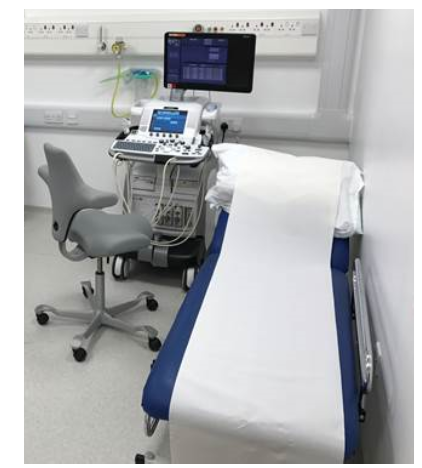
What is a toe pressure test?
The test involves taking a blood pressure reading at your arms and one of your toes. In people with narrowed or blocked arteries in the legs, the blood pressure at the toes will be lower than it would be in people without arterial disease.
This test is a safe and effective way to assess if there is any disease in the arteries in your legs. This will allow the consultant to plan the appropriate treatment for you.
The test is painless and does not use any radiation or needles. There are no risks or side effects associated with this test.
About the test
Where do I go?
The Vascular Studies Unit (VSU) is on level 5 of the Addenbrooke's Treatment Centre (ATC). Please inform reception of your arrival straight away. There are often other clinics in progress so you may not be called in order of arrival. You may bring a relative or friend in with you during the test or request a chaperone if you would like one.
What is consent?
Before your test is performed you must give your consent or permission. Consent is the process by which you give permission to healthcare professionals to provide your care and treatment. It may be implied (offering your arm for a blood pressure reading) or formal (signing a formal consent form for an operation). In either case your consent must be given voluntarily, and you must have all the information you need to make a decision. If you feel you do not have enough information or do not understand the procedure, please ask.
How is a toe pressure test performed?
There is no preparation required and you may eat and drink as usual prior to the test.
A clinical vascular scientist (who might be male or female) will perform and interpret your toe pressures. You will be asked to remove your shoes and socks, roll up your sleeves and lie down on the couch. A blood pressure cuff will be put around your arms and also on one of your toes. A small amount of gel will be placed on your arm and a pen-like device called a handheld Doppler will be used to listen to the blood flow. A small circular sensor will be pressed onto your toe; this will detect blood flow.
The blood pressure cuffs will be pumped up to determine the blood pressure. This may feel tight but should not be painful.
The investigation takes approximately 30 minutes. During the test, you may hear some 'swooshing' noises from the handheld Doppler. These sounds are normal.

What happens next?
The clinical vascular scientist can comment briefly on the findings and will write a report for the consultant who requested the test. You will be able to discuss the results of this investigation fully with the referring team at your next outpatient appointment. In rare cases, the clinical vascular scientist may need to discuss the result with a doctor before you leave.
Contacts / further information
If you require further information, please do not hesitate to contact the Vascular Studies Unit (VSU) on 01223 348117.
We are smoke-free
Smoking is not allowed anywhere on the hospital campus. For advice and support in quitting, contact your GP or the free NHS stop smoking helpline on 0800 169 0 169.
Other formats
Help accessing this information in other formats is available. To find out more about the services we provide, please visit our patient information help page (see link below) or telephone 01223 256998. www.cuh.nhs.uk/contact-us/accessible-information/
Contact us
Cambridge University Hospitals
NHS Foundation Trust
Hills Road, Cambridge
CB2 0QQ
Telephone +44 (0)1223 245151
https://www.cuh.nhs.uk/contact-us/contact-enquiries/

